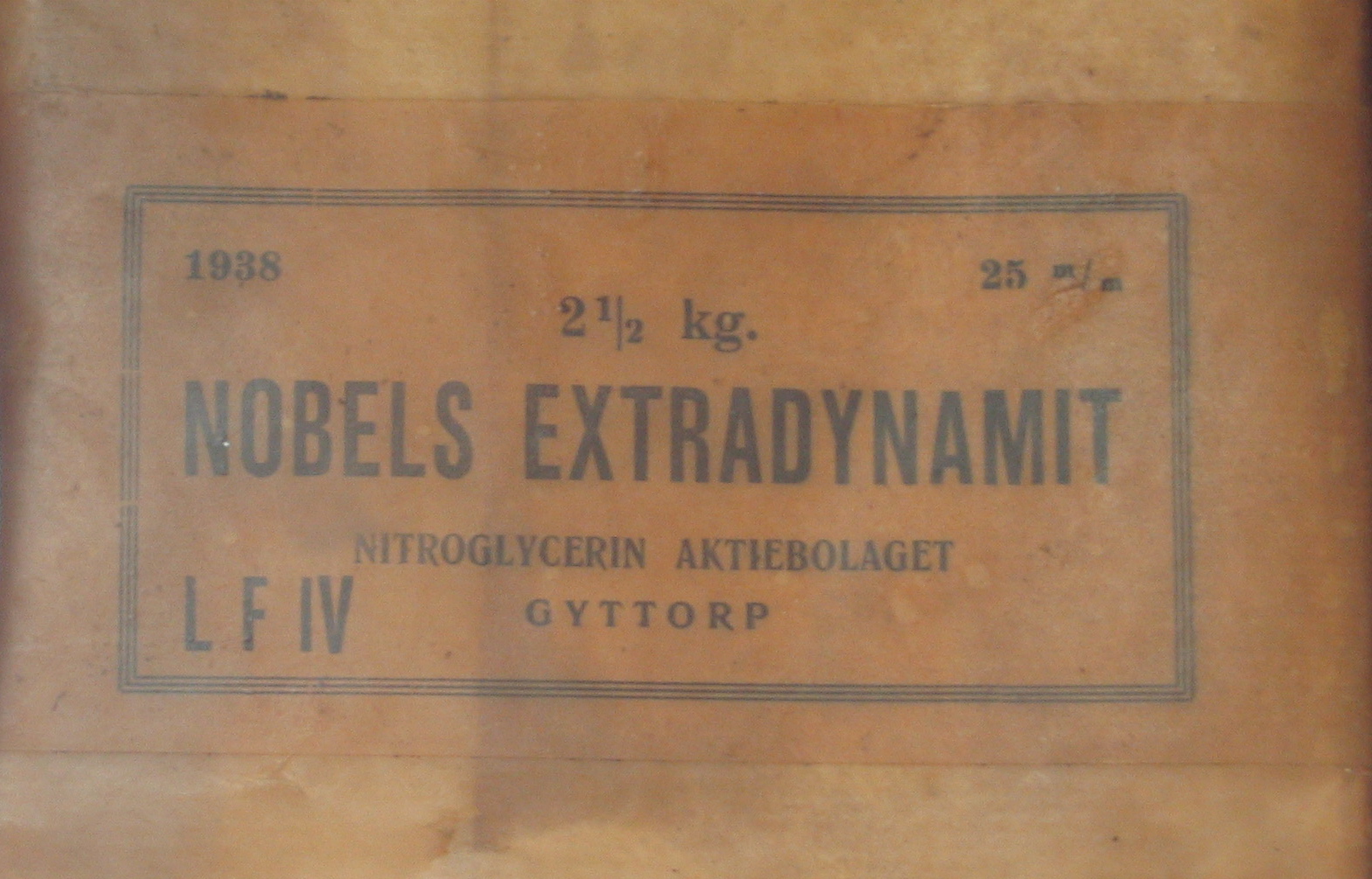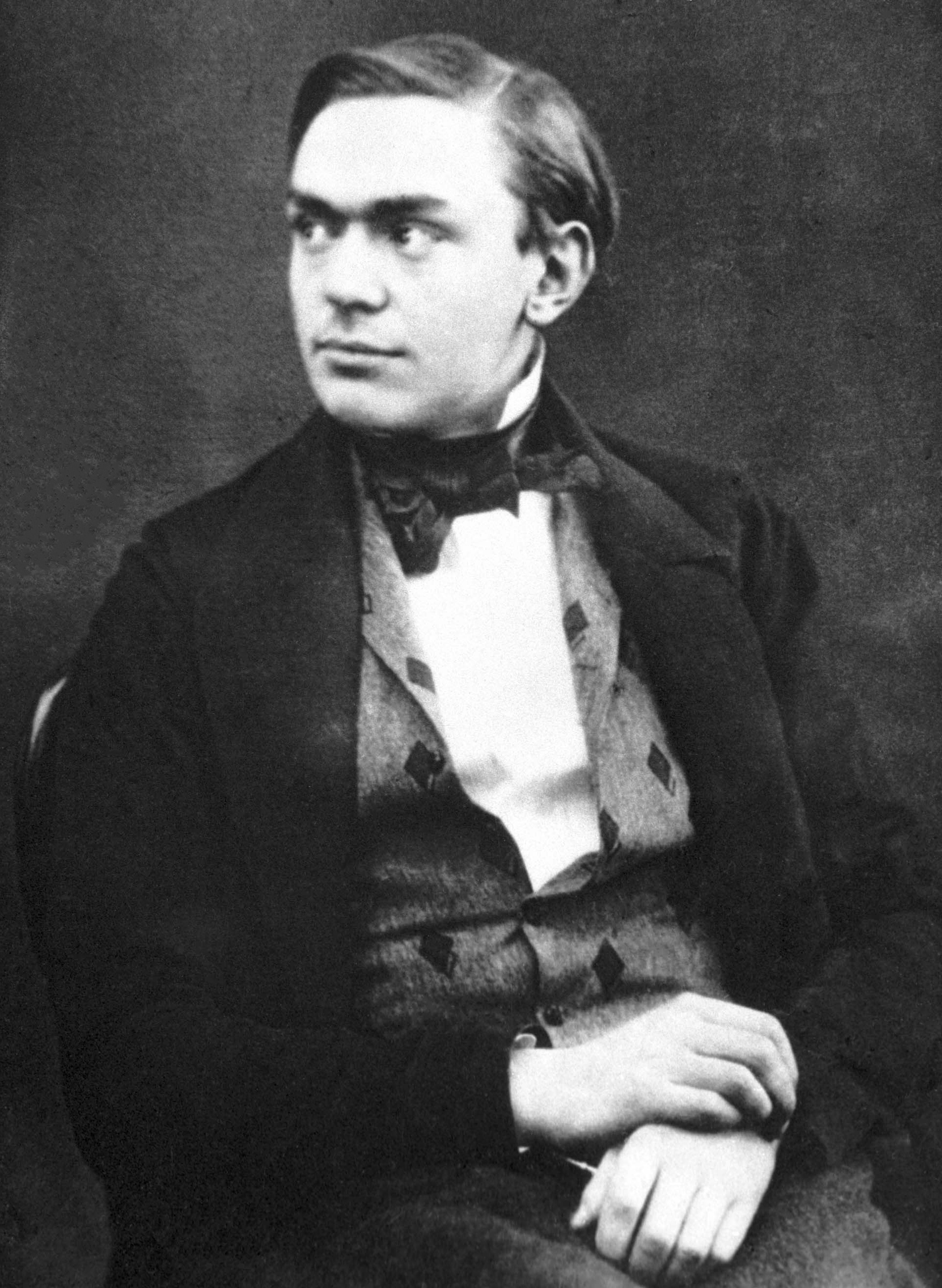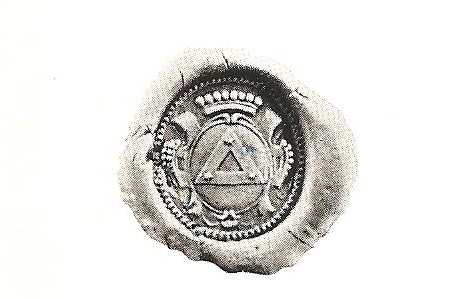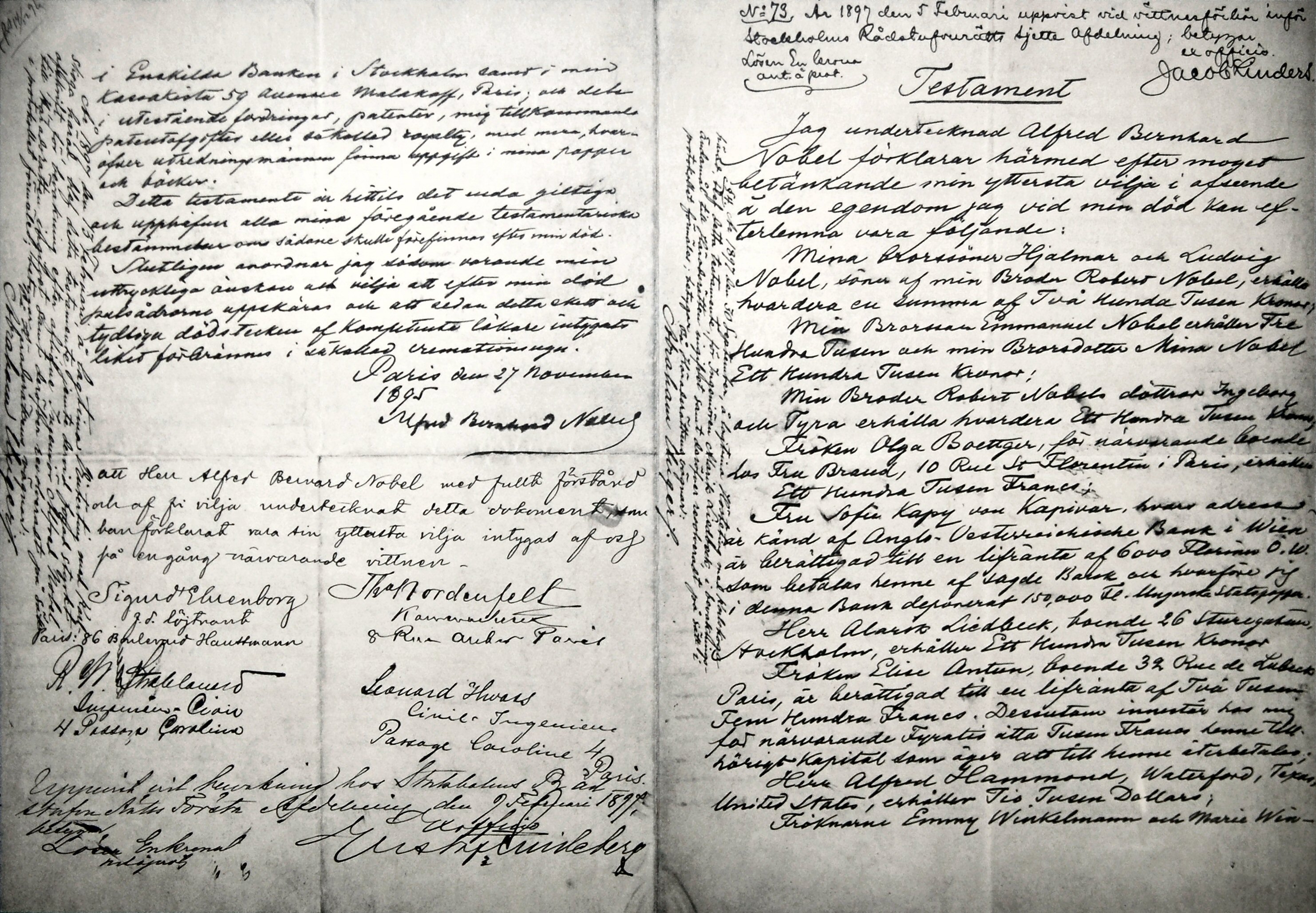|
Dynamite
Dynamite is an explosive made of nitroglycerin, sorbents (such as powdered shells or clay), and Stabilizer (chemistry), stabilizers. It was invented by the Swedish people, Swedish chemist and engineer Alfred Nobel in Geesthacht, Northern Germany, and patented in 1867. It rapidly gained wide-scale use as a more robust alternative to gun powder, black powder. History Dynamite was invented by Swedish chemist Alfred Nobel in the 1860s and was the first safely manageable explosive stronger than black powder. Alfred Nobel's father, Immanuel Nobel, was an industrialist, engineer, and inventor. He built bridges and buildings in Stockholm and founded Sweden's first rubber factory. His construction work inspired him to research new methods of blasting rock that were more effective than black powder. After some bad business deals in Sweden, in 1838 Immanuel moved Nobel family, his family to Saint Petersburg, where Alfred and his brothers were educated privately under Swedish and Russi ... [...More Info...] [...Related Items...] OR: [Wikipedia] [Google] [Baidu] |
Dynamite Diagram
Dynamite is an explosive made of nitroglycerin, sorbents (such as powdered shells or clay), and stabilizers. It was invented by the Swedish chemist and engineer Alfred Nobel in Geesthacht, Northern Germany, and patented in 1867. It rapidly gained wide-scale use as a more robust alternative to black powder. History Dynamite was invented by Swedish chemist Alfred Nobel in the 1860s and was the first safely manageable explosive stronger than black powder. Alfred Nobel's father, Immanuel Nobel, was an industrialist, engineer, and inventor. He built bridges and buildings in Stockholm and founded Sweden's first rubber factory. His construction work inspired him to research new methods of blasting rock that were more effective than black powder. After some bad business deals in Sweden, in 1838 Immanuel moved his family to Saint Petersburg, where Alfred and his brothers were educated privately under Swedish and Russian tutors. At age 17, Alfred was sent abroad for two years; in ... [...More Info...] [...Related Items...] OR: [Wikipedia] [Google] [Baidu] |
Alfred Nobel
Alfred Bernhard Nobel ( , ; 21 October 1833 – 10 December 1896) was a Swedes, Swedish chemist, engineer, inventor, businessman, and Philanthropy, philanthropist. He is best known for having bequeathed his fortune to establish the Nobel Prize, though he also made several important contributions to science, holding 355 patents in his lifetime. Nobel's most famous invention was dynamite, a safer and easier means of harnessing the explosive power of nitroglycerin; it was patented in 1867. Nobel displayed an early aptitude for science and learning, particularly in chemistry and languages; he became fluent in six languages and filed his first patent at age 24. He embarked on many business ventures Nobel family, with his family, most notably owning Bofors, an iron and steel producer that he developed into a major manufacturer of cannons and other armaments. Nobel was later inspired to donate his fortune to the Nobel Prize institution, which would annually recognize those who ... [...More Info...] [...Related Items...] OR: [Wikipedia] [Google] [Baidu] |
Nitroglycerin
Nitroglycerin (NG), (alternative spelling of nitroglycerine) also known as trinitroglycerin (TNG), nitro, glyceryl trinitrate (GTN), or 1,2,3-trinitroxypropane, is a dense, colorless, oily, explosive liquid most commonly produced by nitrating glycerol with white fuming nitric acid under conditions appropriate to the formation of the nitric acid ester. Chemically, the substance is an organic nitrate compound rather than a nitro compound, but the traditional name is retained. Invented in 1847 by Ascanio Sobrero, nitroglycerin has been used ever since as an active ingredient in the manufacture of explosives, namely dynamite, and as such it is employed in the construction, demolition, and mining industries. Since the 1880s, it has been used by militaries as an active ingredient and gelatinizer for nitrocellulose in some solid propellants such as cordite and ballistite. It is a major component in double-based smokeless propellants used by reloaders. Combined with nitrocellulose, hund ... [...More Info...] [...Related Items...] OR: [Wikipedia] [Google] [Baidu] |
Dynamit Nobel
Dynamit Nobel AG is a German chemical and weapons company whose headquarters is in Troisdorf, Germany. It was founded in 1865 by Alfred Nobel. Creation After the death of his younger brother Emil in an 1864 nitroglycerin explosion at the family's armaments factory in Heleneborg, Stockholm, Nobel founded Nitroglycerin AB in Vinterviken, Stockholm. A year later, having found some German business partners, he launched the Alfred Nobel & Company in Germany, building an isolated factory in the Krümmel hills of Geesthacht near Hamburg. This business exported a liquid combination of nitroglycerin and gunpowder known as "Blasting Oil", but it was extremely unstable and difficult to transport, as shown in numerous catastrophes. The buildings of the Krümmel factory itself were destroyed in 1866 and again in 1870. In April 1866, the company shipped three unmarked crates of nitroglycerin to California for the Central Pacific Railroad, who wished to experiment with its blasting capability ... [...More Info...] [...Related Items...] OR: [Wikipedia] [Google] [Baidu] |
Detonator
A detonator, frequently a blasting cap, is a device used to trigger an explosive device. Detonators can be chemically, mechanically, or electrically initiated, the last two being the most common. The commercial use of explosives uses electrical detonators or the capped fuse which is a length of safety fuse to which an ordinary detonator has been joined. Many detonators' primary explosive is a material called ASA compound. This compound is formed from lead azide, lead styphnate and aluminium and is pressed into place above the base charge, usually TNT or tetryl in military detonators and PETN in commercial detonators. Other materials such as DDNP (diazo dinitro phenol) are also used as the primary charge to reduce the amount of lead emitted into the atmosphere by mining and quarrying operations. Old detonators used mercury fulminate as the primary, often mixed with potassium chlorate to yield better performance. A blasting cap is a small sensitive primary explosive device ge ... [...More Info...] [...Related Items...] OR: [Wikipedia] [Google] [Baidu] |
Nobel Family
The Nobel family ( , ) is a prominent Swedes, Swedish and Russians, Russian family closely related to the history both of Sweden and of Russia in the 19th and 20th centuries. Its legacy includes its outstanding contributions to philanthropy and to the development of the armament industry and of the oil industry. Some of its foremost members are Immanuel Nobel, the younger, engineer developer of underwater naval mines and inventor of the rotary lathe used to produce plywood, Ludvig Nobel, the founder of Branobel and one of the richest and most important men in Russia at his time, and Alfred Nobel, the inventor of dynamite who left the major part of his estate to the creation of the Nobel Prizes. Origins The Nobel family originated from the village of Östra Nöbbelöv in Scania, hence the name. The first member was Petrus Olai Nobelius (1655–1707) who married Wendela Rudbeck (1668–1710), daughter of the famous Swedish scientist Olaus Rudbeck the Elder, also known as Olof Rudbe ... [...More Info...] [...Related Items...] OR: [Wikipedia] [Google] [Baidu] |
Diatomaceous Earth
Diatomaceous earth (), diatomite (), or kieselgur/kieselguhr is a naturally occurring, soft, siliceous sedimentary rock that can be crumbled into a fine white to off-white powder. It has a particle size ranging from more than 3 μm to less than 1 mm, but typically 10 to 200 μm. Depending on the granularity, this powder can have an abrasive feel, similar to pumice powder, and has a low density as a result of its high porosity. The typical chemical composition of oven-dried diatomaceous earth is 80–90% silica, with 2–4% alumina (attributed mostly to clay minerals), and 0.5–2% iron oxide. Diatomaceous earth consists of the fossilized remains of diatoms, a type of hard-shelled microalgae. It is used as a filtration aid, mild abrasive in products including metal polishes and toothpaste, mechanical insecticide, absorbent for liquids, matting agent for coatings, reinforcing filler in plastics and rubber, anti-block in plastic films, porous support for c ... [...More Info...] [...Related Items...] OR: [Wikipedia] [Google] [Baidu] |
Explosive
An explosive (or explosive material) is a reactive substance that contains a great amount of potential energy that can produce an explosion if released suddenly, usually accompanied by the production of light, heat, sound, and pressure. An explosive charge is a measured quantity of explosive material, which may either be composed solely of one ingredient or be a mixture containing at least two substances. The potential energy stored in an explosive material may, for example, be * chemical energy, such as nitroglycerin or grain dust * pressurized gas, such as a gas cylinder, aerosol can, or BLEVE * nuclear energy, such as in the fissile isotopes uranium-235 and plutonium-239 Explosive materials may be categorized by the speed at which they expand. Materials that detonate (the front of the chemical reaction moves faster through the material than the speed of sound) are said to be "high explosives" and materials that deflagrate are said to be "low explosives". Explosives may al ... [...More Info...] [...Related Items...] OR: [Wikipedia] [Google] [Baidu] |
Nobels Extradynamit Label
The Nobel Prizes ( ; sv, Nobelpriset ; no, Nobelprisen ) are five separate prizes that, according to Alfred Nobel's will of 1895, are awarded to "those who, during the preceding year, have conferred the greatest benefit to humankind." Alfred Nobel was a Swedish chemist, engineer, and industrialist most famously known for the invention of dynamite. He died in 1896. In his will, he bequeathed all of his "remaining realisable assets" to be used to establish five prizes which became known as "Nobel Prizes." Nobel Prizes were first awarded in 1901. Nobel Prizes are awarded in the fields of Physics, Chemistry, Physiology or Medicine, Literature, and Peace (Nobel characterized the Peace Prize as "to the person who has done the most or best to advance fellowship among nations, the abolition or reduction of standing armies, and the establishment and promotion of peace congresses"). In 1968, Sveriges Riksbank (Sweden's central bank) funded the establishment of the Prize in Economic S ... [...More Info...] [...Related Items...] OR: [Wikipedia] [Google] [Baidu] |
Vinterviken
Vinterviken ("Winter-cove") is a bay in the ''Mälaren'' lake in southern Stockholm, Sweden. Vinterviken is located in a valley surrounded by the Gröndal and Aspudden suburb areas. The origin of the name Vinterviken can be traced back to the 17th century. Back then a common winter route (on the lake ice) used to go from Fittja and the Mälaren islands, and entered the city through Vinterviken and lake Trehörningen (nowadays named Trekanten). Historical and cultural area During its history, Vinterviken has transformed from a vital industrial area to a recreational region. The most important stage was when Alfred Nobel, a Swedish chemist, established his new research laboratory and factory there. In his Vinterviken laboratory, Nobel invented an enormous revolution for armaments and explosive manufacturing, dynamite. Alfred Nobel’s factory Nobel bought the whole area of Vinterviken in 1865. Due to safety issues he moved his research lab and his factory (''Nitroglycerin ... [...More Info...] [...Related Items...] OR: [Wikipedia] [Google] [Baidu] |
Geesthacht
Geesthacht () is the largest city in the District of the Duchy of Lauenburg (Herzogtum Lauenburg) in Schleswig-Holstein in Northern Germany, south-east of Hamburg on the right bank of the River Elbe. History A church was built in what is today Geesthacht around the year 800. The town was first mentioned in 1216 as ''Hachede'', then a part of the Duchy of Saxony. A change in the course of the Elbe cut the settlement into two: Geest''hacht'' and Marschacht (in today's Lower Saxony). In 1296, Geesthacht became part of the Duchy of Saxe-Lauenburg, partitioned from Saxony. Duke Eric III pawned Geesthacht - as part of the Herrschaft of Bergedorf - to the Free City of Lübeck in 1370. In 1401, Duke Eric IV retook the pawned area by force. Geesthacht was ceded as part of a condominium to the Hanseatic cities Hamburg and Lübeck by the Peace of Perleberg in 1420. In 1811, Geesthacht was annexed to the First French Empire as part of the Bouches de l'Elbe département, but the condomin ... [...More Info...] [...Related Items...] OR: [Wikipedia] [Google] [Baidu] |
Théophile-Jules Pelouze
Théophile-Jules Pelouze (also known as Jules Pelouze, Théophile Pelouze, Theo Pelouze, or T. J. Pelouze, ; 26 February 180731 May 1867) was a French chemist. Life He was born at Valognes, and died in Paris. His father, Edmond Pelouze, was an industrial chemist and the author of several technical handbooks. The son, after spending some time in a pharmacy at La Fère acted as laboratory assistant to Gay-Lussac and Jean Louis Lassaigne at Paris from 1827 to 1829. In 1830 he was appointed associate professor of chemistry at Lille, but returning to Paris next year became ''repetiteur'', and subsequently professor at the École polytechnique. He also held the chair of chemistry at the Collège de France, and in 1833 became assayer to the mint and in 1848 president of the ''Commission des Monnaies''. After the coup d'état in 1851 he resigned his appointments, but continued to conduct an experimental laboratory-school he had started in 1846. There he worked with the explosive mate ... [...More Info...] [...Related Items...] OR: [Wikipedia] [Google] [Baidu] |









